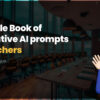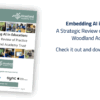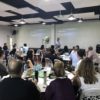
Tonight I’m hosting my first #ukedchat session on Twitter. I’m really looking forward to it. There have been changes in the ‘lead’ over the course of the past week, with Flipped Learning taking an early lead and then ‘Secret Spaces’ fighting back. The poll had 234 votes and 768 views. Cool! Here’s how it all panned out:

So with the ‘Flipped Learning’ topic taking the lead, I thought I’d provide some background information and reading to the topic.
Wikpedia states:
Flip teaching
From Wikipedia, the free encyclopedia
Flip teaching is a form of blended learning which encompasses any use of using Internet technology to leverage the learning in a classroom, so a teacher can spend more time interacting with students instead of lecturing. This is most commonly being done using teacher created videos that students view outside of class time. It is also known as backwards classroom, reverse instruction and reverse teaching. [1]
The traditional pattern of secondary education has been to have classroom lectures, in which the teacher explains a topic, followed by homework, in which the student does exercises. In flip teaching, the student first studies the topic by himself, typically using video lessons created by the instructor[2] or shared by another educator, such as those provided by the Khan Academy. In the classroom, the pupil then tries to apply the knowledge by solving problems and doing practical work.[3][4][5] The role of the classroom teacher is then to tutor the student when they become stuck, rather than to impart the initial lesson. This allows time inside the class to be used for additional learning-based activities,[6] including use of differentiated instruction and project-based learning.[7]
Flip teaching allows more hands-on time with the instructor guiding the students, allowing them to assist the students when they are assimilating information and creating new ideas (upper end of Bloom’s Taxonomy).[8]
With that baseline, part of the issue which is getting Steve Wheeler a bit “flipping irritated” is that the term is (as admitted by Aaron Sams) ambiguous and seems to only really include the preparation and dissemination of videos on topics ala the Khan Academy.
So what is the way forward? How do we get flipped or instructional learning in to our classrooms? Should we have flipped learning in our schools? If we do, how do we deliver it? Does it require access to technology? If so, how do we provide that? Is video the only way forward? Could we use a more analogue method (anyone heard of books? Or in a digital world, iBooks?)? What do we do about the digital divide if it is a requirement for technology to be used? Should our school day change to give students more time and chance to reflect on the ‘flipped learning’?
Flip or flop?
What do you think?
See you at 8pm tonight for some hopefully lively discussion around this topic.
In the meantime, here are some more sites with information on the topic of the flipped classroom.
http://en.wikipedia.org/wiki/Flip_teaching
http://www.wired.com/cloudline/2012/03/flipped-classrooms/
http://www.flippedhighschool.com/
and for some already lively debate, check:
http://steve-wheeler.blogspot.co.uk/2012/03/what-flip.html















3 Comments